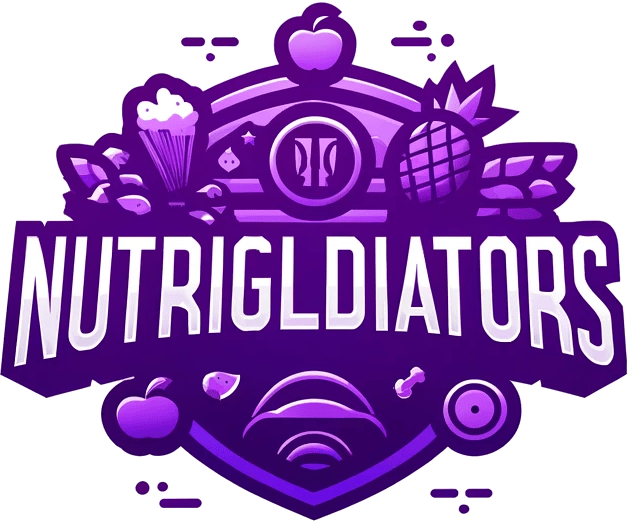[ad_1]
What is the influence of the female reproductive hormones in cow’s milk on males, females, and offspring?
All animal-based foods consist of hormones, but the primary exposure to hormones in our diet stems from dairy items. Specifically, the predominant hormones present are prolactin, corticosteroids, and progesterone, alongside a variety of estrogens, which are further concentrated in derivative dairy products. For example, hormones are five times more concentrated in cream and cheese, and ten times more in butter, as highlighted in this image.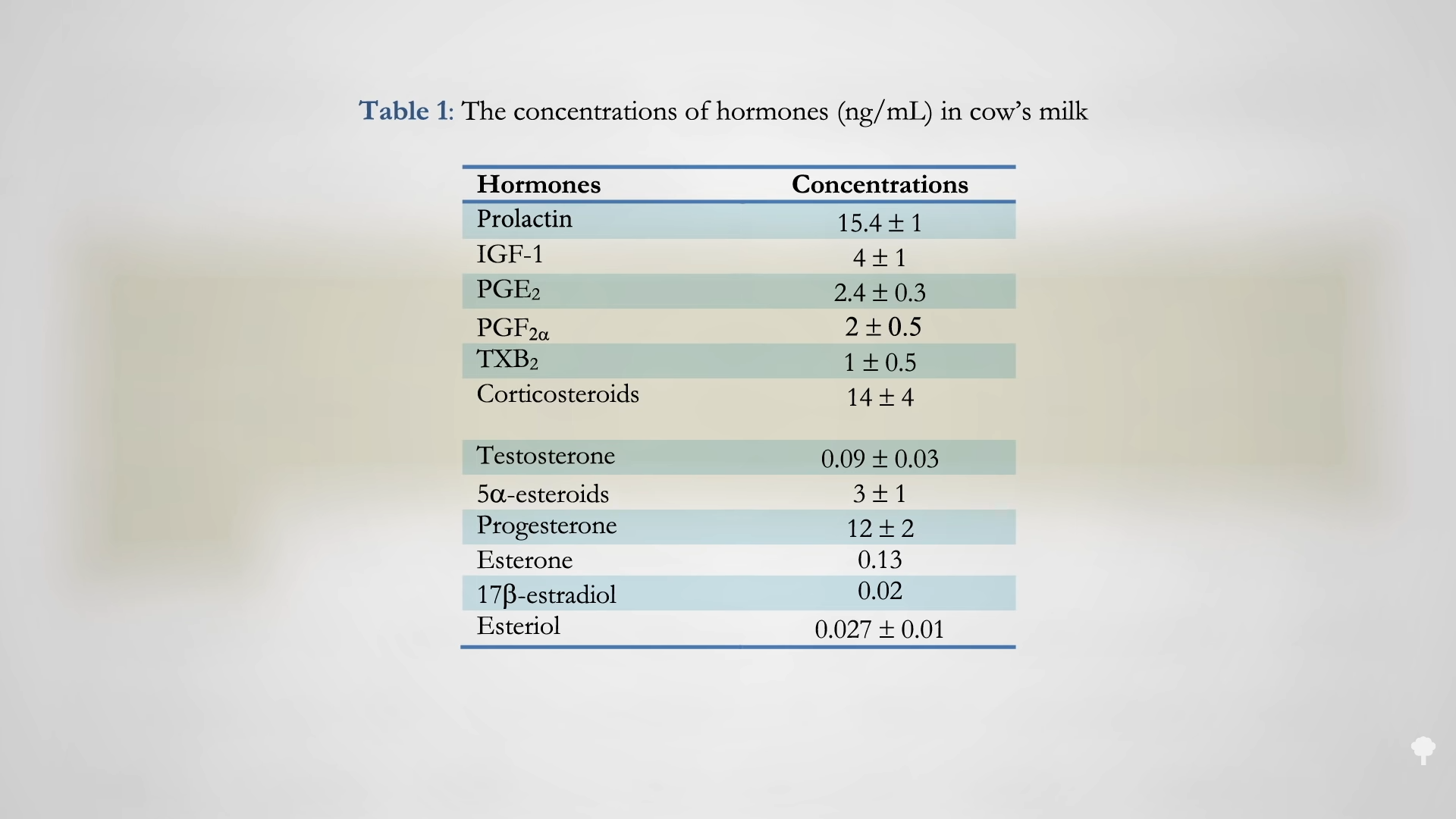
Regarding steroid hormones in the food chain, roughly three-quarters of ingested female sex steroids derive from dairy, while the remaining portion is evenly distributed between eggs and meat (inclusive of fish). Notably, eggs contribute nearly equal amounts as all types of meat combined, which aligns with the fact that eggs are directly sourced from a hen’s ovary. Among different meat types, the hormone levels in white meat (fish and poultry) match those found in pork and beef. Notably, these hormones are naturally occurring, not including artificial hormone injections such as bovine growth hormone. Consequently, whether the meat is organic or not is irrelevant since animals inherently produce hormones, which inevitably transfer into animal products.
Approximately half of the surveyed individuals were unaware that milk naturally contains hormones, and many lacked fundamental knowledge (22% didn’t know that cows only produce milk after giving birth) – that is, they were oblivious to the primary purpose of milk, which is to nourish calf offspring. Researchers advocated for the need to educate the public about dairy production practices. In response, a respondent in the Journal of Dairy Science pointed out that disclosing the industry’s new technologies, such as genetically engineered farm animals, or controversial husbandry practices, does not result in widespread public approval, so it’s better to refrain from educational initiatives.
The public might not recognize the extent to which they are exposed to estrogen through the consumption of commercial milk obtained from pregnant cows, which carries potential public health implications. “Modern genetically enhanced dairy cows, like the Holstein,” the typical black and white cow, are capable of being re-impregnated after giving birth and continue lactating through almost their entire next pregnancy. Consequently, commercial cow’s milk in present times contains substantial levels of pregnancy hormones such as estrogens and progesterone.
As evidenced in the graph below and at 2:42 in my video, during the initial eight months of a pregnant cow’s nine-month gestation, hormone levels in her milk surge more than 20-fold. Nonetheless, the quantity equates to merely a millionth of a gram per quart, which is substantially lower – 10 to 20 times – than the estrogen hormone content in a birth control pill. Therefore, is it plausible that consuming such milk would significantly impact human hormone levels?
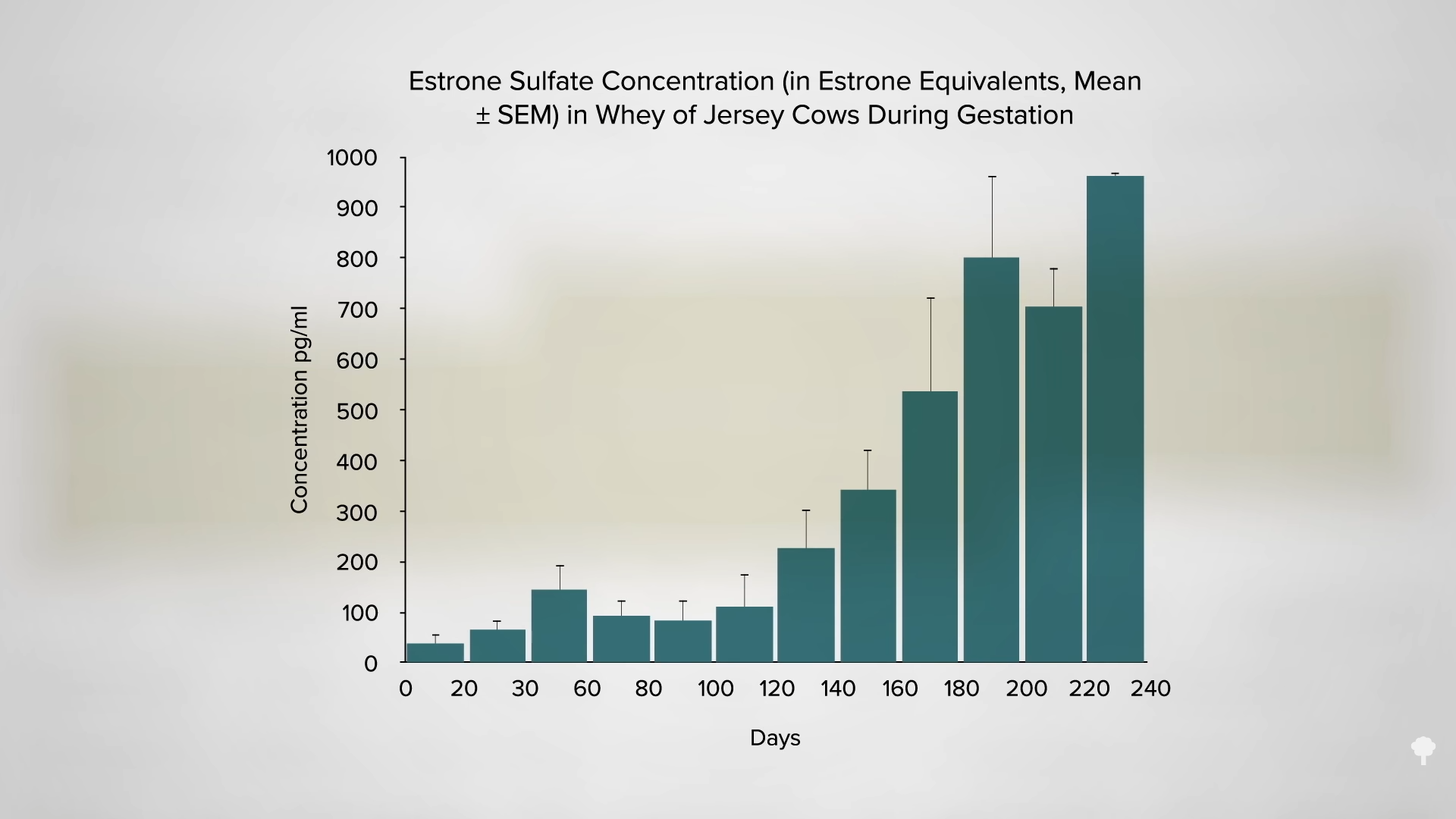
Upon consumption of approximately a liter of milk, researchers observed a surge in the hormone levels of seven men, as depicted in the graph below and at 3:08 in my video.
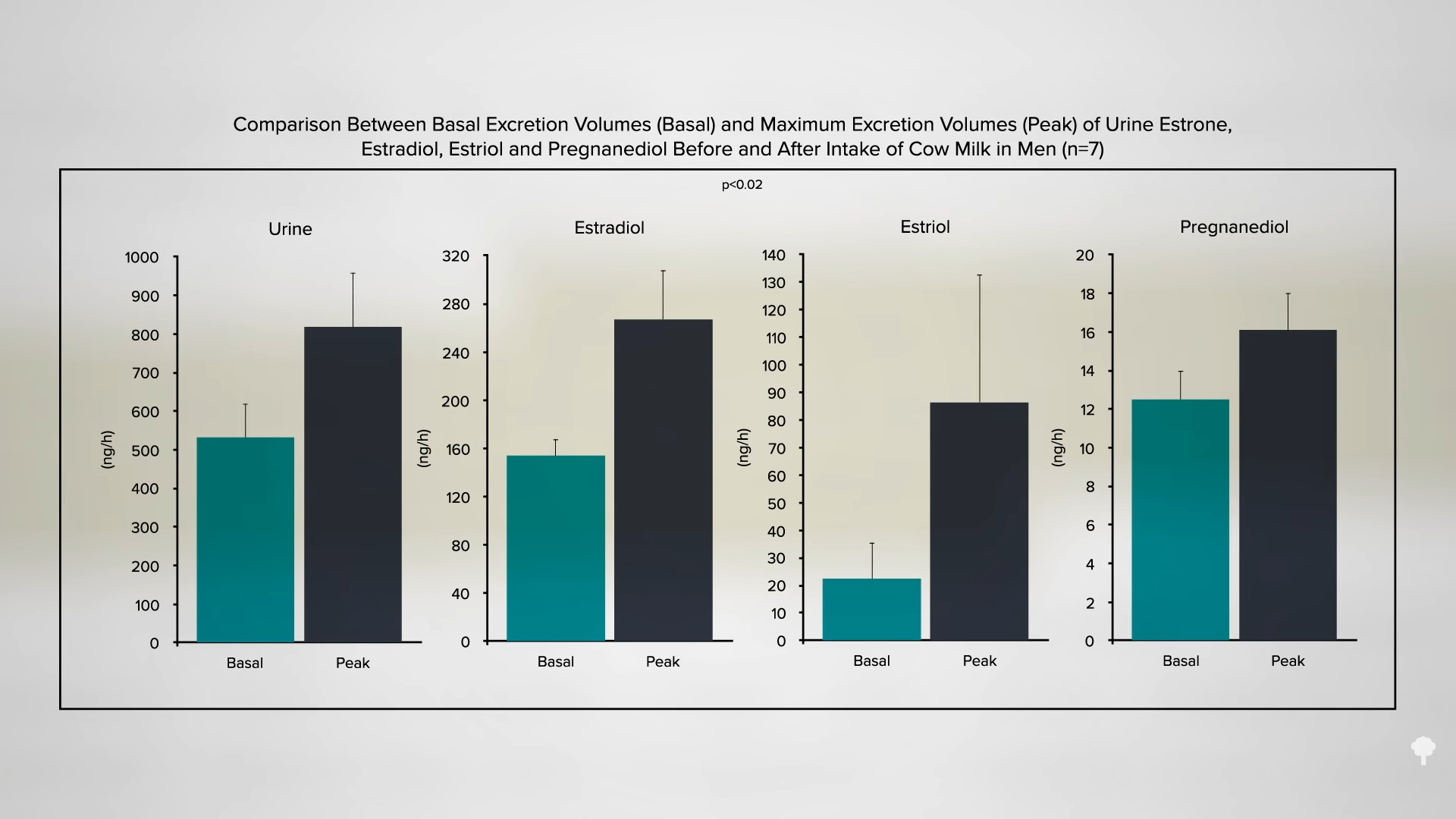
The research also examined the average levels of female sex steroids in the bodies of six schoolchildren (with an average age of eight) before and after consuming approximately two cups of milk. Post consumption, their levels experienced a threefold or fourfold increase from the baseline hormone levels, as illustrated in the graph below and at 3:23 in my video. Hence, one can speculate about the repercussions of milk consumption on males or prepubescent children. However, what about females? Presumably, wouldn’t females inherently possess high estrogen levels? This is not universally applicable.
Consider postmenopausal women and endometrial cancer, for example. Estrogens play a “central role” in the development of endometrial cancer, characterized by cancerous growth in the lining of the uterus. “Milk and dairy products serve as sources of steroid hormones and growth factors that may exert physiological effects in humans.” Subsequently, Harvard researchers conducted a comprehensive study involving tens of thousands ofFor decades, extensive research has been carried out on women and their dairy intake, revealing a notably elevated risk of endometrial cancer among postmenopausal women who have a higher dairy consumption, as evidenced below and at 4:19 in my video. 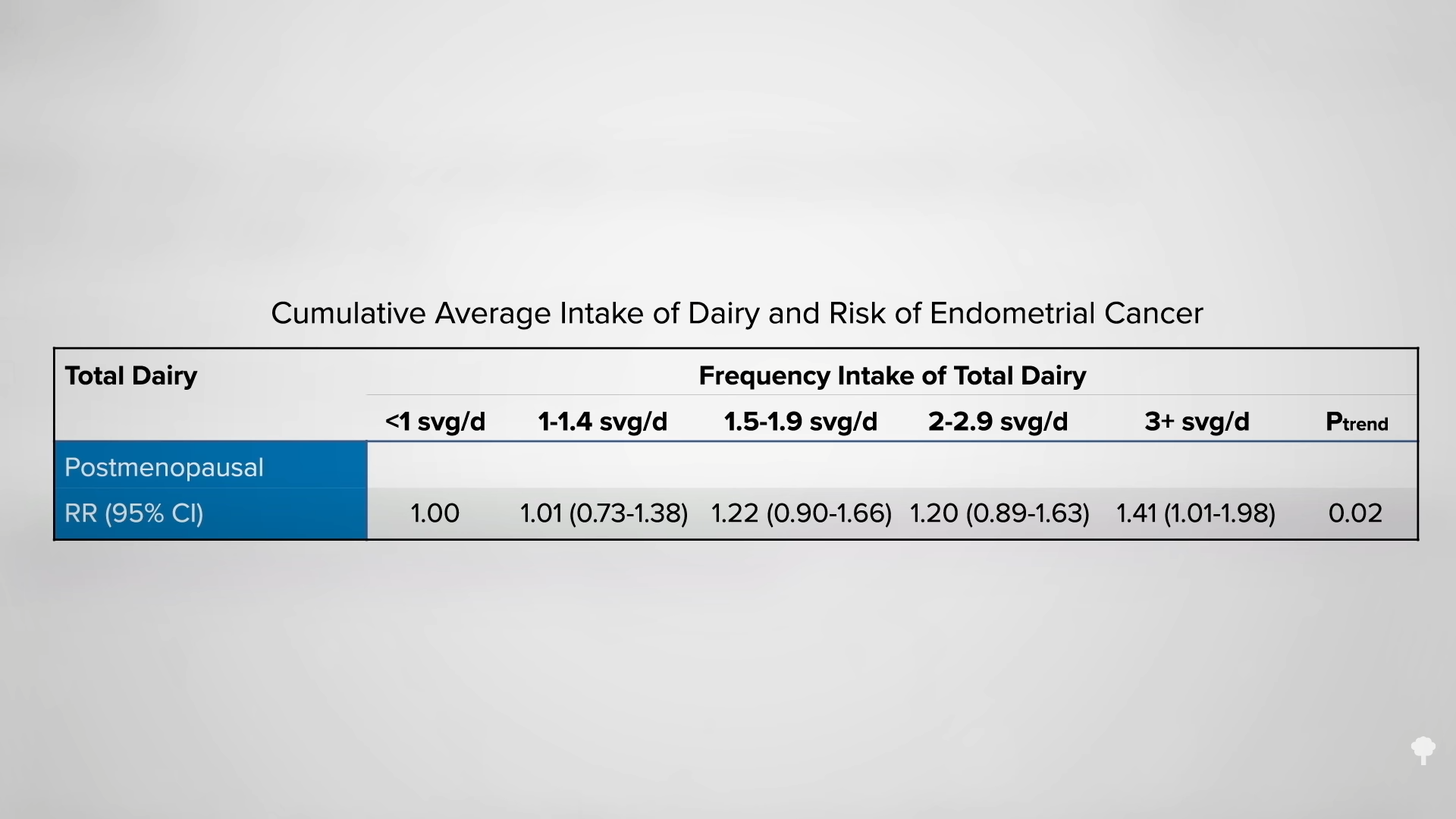 What is the impact of hormonal dietary exposure on breast cancer? Unfortunately, “currently, it is not feasible to comprehend the role of dietary hormone exposure in the overall prevalence of breast cancer.”
What is the impact of hormonal dietary exposure on breast cancer? Unfortunately, “currently, it is not feasible to comprehend the role of dietary hormone exposure in the overall prevalence of breast cancer.”
For further insight into the correlation between cancer and dairy, refer to related videos below.
I address the influence of dairy estrogen on males in Dairy Estrogen and Male Fertility.
How about the phytoestrogens found in soy? Check them out here.
Click here to get The Oxridized Cholesterol Strategy at discounted price while it’s still available…
[ad_2]
